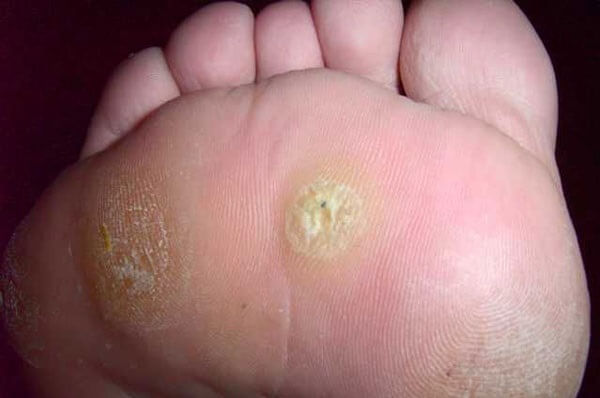 Warts: Types and Treatments
Warts: Types and Treatments
Let’s be honest, no one wants a wart. While they are usually harmless, they are ugly and often embarrassing. Some of them can also be painful. But how do we get warts in the first place? They are skin growths caused by the human papillomavirus (HPV). They can appear on the fingers, hands, feet, and other areas of the body. The good news is that most warts can be removed.
What Are Genital Warts?
There are over 100 types of HPV, which is the virus that causes warts. While most cases of warts are harmless, there are a few strains of HPV that can cause warts on and around your genitals. In women, these warts can eventually lead to cervical cancer. If you think you have this form of warts, you should see your doctor right away. Your doctor will be able to diagnose your warts and recommend the best genital warts treatment.
Five Major Types of Warts
While warts are considered contagious, it’s not uncommon for just one family member to have them. Often, they affect just one part of the body, but sometimes they can spread to other areas. There are five major types of warts to look out for:
1. Common Warts
Some warts are pretty common and can appear as early as childhood. Common warts are usually found on your fingers or toes, but they can appear anywhere else.
2. Plantar Warts
These warts usually grow on the soles of the feet. These warts are different from others because they grow into the skin, not out of it.
3. Flat Warts
Flat warts tend to grow on the face, thighs, or arms. These are pretty common in teens and children.
4. Filiform Warts
If you have a tiny flap or tag of skin, this is probably a filiform wart. They grow around your mouth, nose, neck, or under your chin.
5. Periungual Warts
These grow under and around the toenails and fingernails. They can be very painful and even impact nail growth.
Symptoms and Signs of Different Types of Warts
Each type of wart appears on a different part of the body and has a distinct appearance. Here are the signs and symptoms to look for:
- Common warts are usually dome-shaped and pop up on the backs of fingers, toes, and knees. They often have small black dots on their surfaces.
- Plantar warts usually have a small hole in the bottom of your foot that’s surrounded by hardened skin. They usually look flesh-colored or like light brown lumps that are flecked with small, clotted blood vessels. While these can make walking pretty painful, they usually go away on their own. There are several over-the-counter options for plantar wart treatment if you decide to get rid of them.
- Flat warts are sometimes called plane warts. They often appear in large numbers on the face, legs, and other parts of the body. They can be pink, brownish, or even yellow color. They are usually small and have a flat top that looks like they’ve been scrapped.
- Filiform warts have a single long stalk and usually form somewhere on the face.
- Periungual Warts usually grow around or under the nail.
Treatment Options for Warts
Sometimes warts disappear spontaneously, but it may take years. Sometimes you need a little help getting them removed, and that’s where Winston-Salem Dermatology comes into play. Warts respond to a variety of treatments. Sometimes they reappear after treatment, or you may need more than just one type of treatment to clear them up. Here are a few ways warts can be removed:
1. Freezing (Cryotherapy)
With this process, liquid nitrogen is sprayed on the wart to freeze it. This can be a bit painful, but it usually works well. It will blister and then fall off within a week or two. You can also buy this over-the-counter, but it may not freeze the wart deep enough.
2. Cantharidin
With this process, the cantharidin is applied to the wart and covered with a bandage. The solution is made to form a blister around the wart. When the blister lifts off, the wart also lifts off the skin.
3. Other Medications
There are other medications that can treat warts. Bleomycin is injected into the wart to kill it. Imiquimod is a type of cream that can be applied for genital warts treatment. And Immunotherapy is another drug to fight off warts that stimulates your own immune system to fight off the virus.
4. Over-the-Counter Medications
Salicylic acid is found in several over-the-counter treatments like gel, ointments, or pads. If applied regularly, the acid will dissolve the wart. There are several over-the-counter options for foot wart treatment and other warts treatments.
5. Minor Surgery
Sometimes surgery may be required if other therapies won’t work. The base of the wart may be cut away by using an electric needle or by deep-freezing it.
When Should You See a Doctor?
Sometimes warts can just be left alone without having to be removed. But there are some circumstances where you should see a doctor. Here are a few examples:
- You have warts on your face or a sensitive part of the body like the genitals or mouth
- You notice your wart bleeding
- Your wart is painful
- Your wart changes colors
- If you have diabetes or an immune deficiency like HIV/AIDS while you have warts
Let Winston Salem Dermatology Help with Your Warts
Don’t suffer from the pain or embarrassment of a wart. Let the experts at Winston Salem Dermatology remove it. There are several treatment options depending on your age and the location of the wart you have. We will examine your wart and find out the best way to fix it.
Book your Consultation with Janet today! Call ☎ (336) 774-8636

